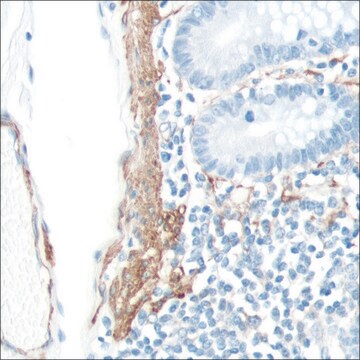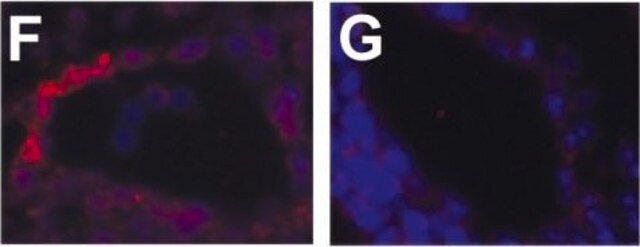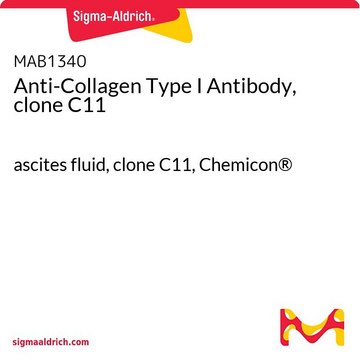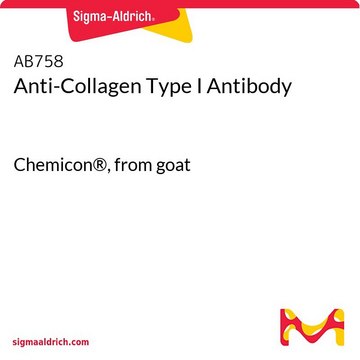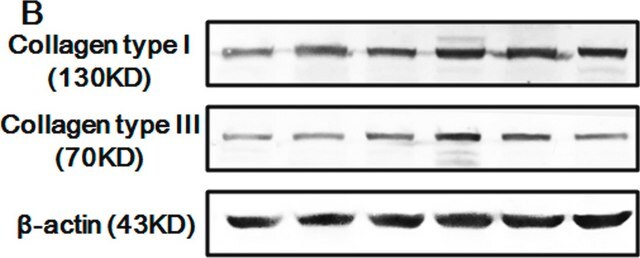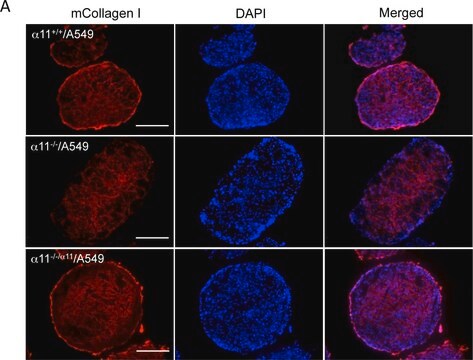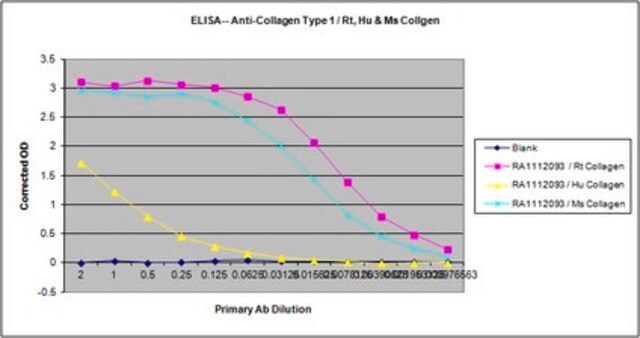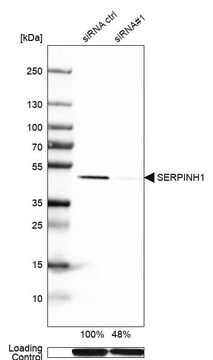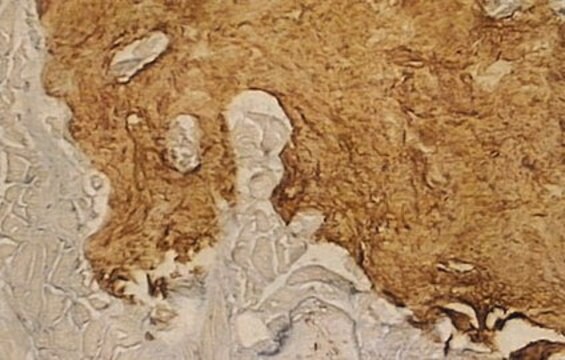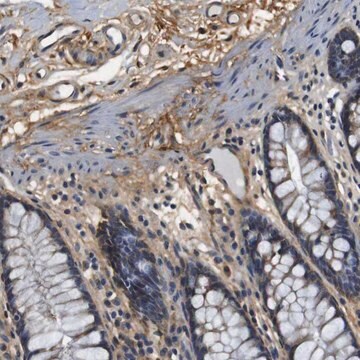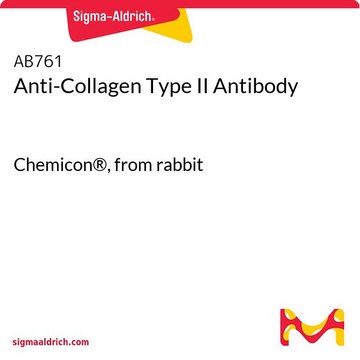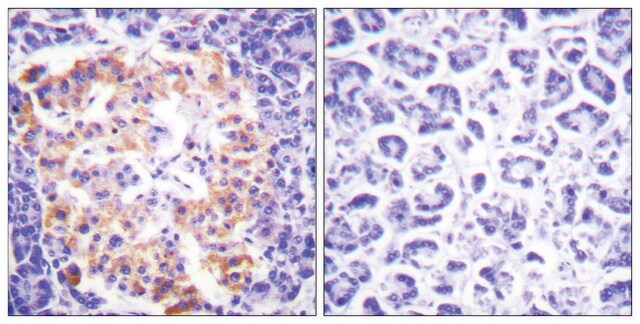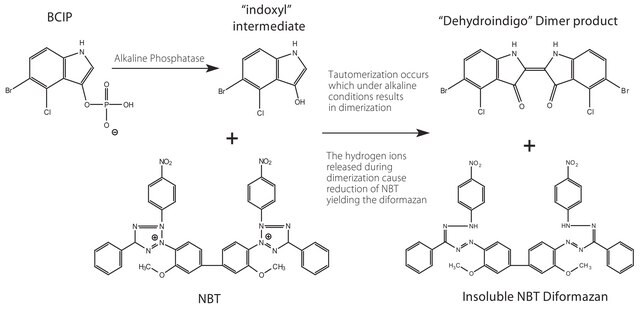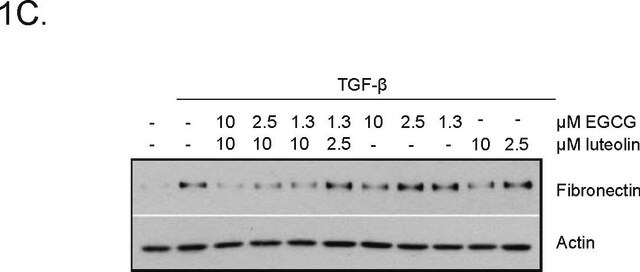AB745
Anti-Collagen Type I (COL1A1) Antibody
CHEMICON®, rabbit polyclonal
Sinónimos:
Anti-CAFYD, Anti-EDSARTH1, Anti-EDSC, Anti-OI1, Anti-OI2, Anti-OI3, Anti-OI4
About This Item
Productos recomendados
Nombre del producto
Anticuerpo anti-colágeno tipo I, Chemicon®, from rabbit
origen biológico
rabbit
Nivel de calidad
forma del anticuerpo
purified immunoglobulin (Semi-purified)
tipo de anticuerpo
primary antibodies
clon
polyclonal
reactividad de especies
human
fabricante / nombre comercial
Chemicon®
técnicas
ELISA: suitable
immunohistochemistry: suitable
western blot: suitable
idoneidad
not suitable for immunohistochemistry (Paraffin)
Nº de acceso NCBI
Nº de acceso UniProt
Condiciones de envío
dry ice
modificación del objetivo postraduccional
unmodified
Información sobre el gen
human ... COL1A1(1277)
Especificidad
Inmunógeno
Aplicación
Estructura celular
Visualización microinmunofluorescente indirecta del colágeno tipo I en cortes criostáticos de tejido o células cultivadas humanos: 1:10-1:40.
Western blot 1:200
No se recomienda su uso en tejidos tratados con parafina.
El usuario final debe determinar las diluciones de trabajo óptimas.
Proteínas de la ECM
Forma física
El producto es líquido en cloruro de sodio 0.15 M, fosfato de sodio 10 mM pH 7,5 con manitol al 0,1 % y dextrano al 0,1 % como estabilizadores. Sin conservantes
Almacenamiento y estabilidad
Otras notas
Información legal
Cláusula de descargo de responsabilidad
¿No encuentra el producto adecuado?
Pruebe nuestro Herramienta de selección de productos.
Código de clase de almacenamiento
12 - Non Combustible Liquids
Clase de riesgo para el agua (WGK)
WGK 2
Punto de inflamabilidad (°F)
Not applicable
Punto de inflamabilidad (°C)
Not applicable
Certificados de análisis (COA)
Busque Certificados de análisis (COA) introduciendo el número de lote del producto. Los números de lote se encuentran en la etiqueta del producto después de las palabras «Lot» o «Batch»
¿Ya tiene este producto?
Encuentre la documentación para los productos que ha comprado recientemente en la Biblioteca de documentos.
Los clientes también vieron
Nuestro equipo de científicos tiene experiencia en todas las áreas de investigación: Ciencias de la vida, Ciencia de los materiales, Síntesis química, Cromatografía, Analítica y muchas otras.
Póngase en contacto con el Servicio técnico